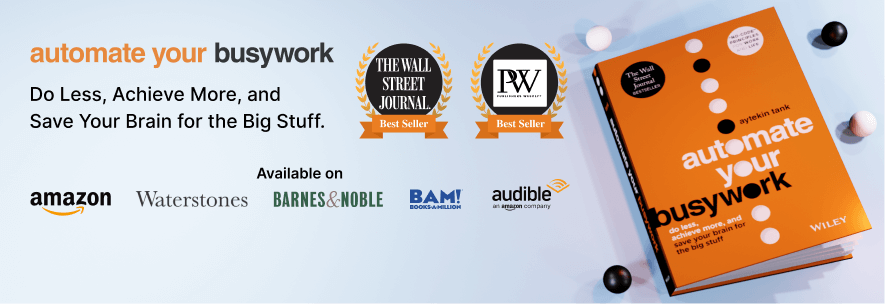In Plato’s “Republic,” Socrates describes a scenario in which prisoners are chained in a cave for all of their lives, and see nothing but the blank wall facing them.
Objects passing in front of a fire cast shadows against the cave wall, and knowing nothing of the outside world, the prisoners believe that these shadows are the reality. They even give them names.
Plato’s cave allegory demonstrates how our experience (or lack thereof) affects our perceptions of reality. The philosopher is like a prisoner freed from the cave; he discovers that the shadows are not reality at all.
The allegory also reflects how our thoughts determine our worldview.
As Albert Einstein once said:
“The world as we have created it is a process of our thinking. It cannot be changed without changing our thinking.”
As Einstein suggests, we can change how we think and in doing so, change our perception of the world.
Becoming a better thinker means seeing a situation from different perspectives. It means having a more holistic outlook, and a more complete view of reality.
We have 4.3 million users and over 140 employees at Jotform. That’s a lot of viewpoints to consider — and each one matters to the health of our company and the happiness of our customers.
If I were to make decisions based on my perspective alone, I’d be doing a disservice to my colleagues and our users. But if I improve how I think, I can make more informed decisions and reinforce Jotform’s competitive advantage.
So, I’ve been paying closer attention to my thoughts lately — because thinking strategically is crucial to our success.
There are many ways to alter and improve our thinking, but I’m going to focus on two that I find particularly useful: mental habit loops and mental models.
1. Rewriting problematic thought loops
Every day, as soon as I arrive at the office, I turn on my computer and launch AI Writer. Like brushing my teeth, it’s one of my habits that would take deliberate effort to change.
Just as we form habits of action related to our environment, we also form habits of thinking. Our instinctual thought patterns in certain situations are called mental habit loops.
For example, let’s say every time someone cuts you off in traffic, you may make an instinctive judgment about the driver: he or she must be careless and egotistical.
Even if our gut reactions are sometimes correct, they don’t always accurately assess a situation. Maybe the driver’s pregnant wife has just gone into labor and the driver is nervously rushing her to the hospital. In that case, perhaps that person who cut you off isn’t so careless and egotistical after all, but rather, genuinely concerned for the wellbeing of his or her spouse and future child.
Though mental habit loops help us to move through life without analyzing every situation ad-nauseum, it’s important to recognize when they lead to problematic thinking.
For starters, we can try looking at things like we’re seeing them for the first time. Step out of your own shoes, and attempt to see something objectively, or from another person’s perspective.
When we view a situation objectively and from various perspectives, we not only broaden our understanding of the whole and how we fit within it, but we also develop a greater sense of empathy.
I periodically re-read the 2005 Kenyon commencement speech by the late, great writer David Foster Wallace. Diverging from cookie-cutter inspirational material, Wallace described how a liberal arts education teaches students how to think.
“I think this is one part of what teaching me how to think is really supposed to mean,” said Wallace. “To be just a little less arrogant. To have just a little critical awareness about myself and my certainties. Because a huge percentage of the stuff that I tend to be automatically certain of is, it turns out, totally wrong and deluded.”
That awareness is a major takeaway: knowing our assumptions and acknowledging that they are often incorrect.
As Wallace continued,
“It’s a matter of my choosing to do the work of somehow altering or getting free of my natural, hard-wired default setting which is to be deeply and literally self-centered and to see and interpret everything through this lens of self.”
It takes work, but being aware and proactively objective are the first steps toward righting our mental loops.
2. Expanding our mental frameworks
On a more general level, we also possess mental models: frameworks we use to interpret the world and understand the relationships between things. And different people rely on different mental models as they navigate the world.
For example, a person who wants to lose weight visits three specialists: a nutritionist, a plastic surgeon, and a psychologist.
Each specialist would view the issue according to his or her unique mental models. The nutritionist offers a diet-based solution, the surgeon a surgical remedy, and the psychologist a course of therapy to tackle the patient’s desire for physical change.
Of course, mental models can also be highly useful. They help us to organize the world’s endless details and to make more intelligent decisions.
At Jotform, every new employee completes a month-long boot camp. They also answer 100 customer support questions.
We want these new staff members to interact with as many users as possible, so they can build accurate mental models of our customers.
Later, this knowledge helps them to make better on-the-job decisions, because they can think like our users.
The problem with mental models emerges if one dominates our thinking and we see everything through that lens. As the proverb says, “If all you have is a hammer, everything looks like a nail.”
Think of your own mental models as a toolbox: the more tools you have, the better you can handle different circumstances.
That’s the great thing about mental models; we can always expand them and add new models to our repertoire. And by applying a variety of mental models, we have a more holistic view of the world and we can make smarter decisions.
For example, your Circle of Competence includes all the areas in which you’ve gained useful knowledge, through experience or study. Everyone has different Circles of Competence. While we can all grasp some areas — like customer service — others require a lot more specialization, such as engineering.
At Jotform, if a task is not within my Circle of Competence, I won’t hesitate to delegate it to someone who can do it better.
If I’m creating engineering teams, I look carefully at each engineer’s Circle of Competence. For example, while some people have a knack for growth, others might excel at creating partnerships and integrations — so I assign them to the platform team.
Using the Circle of Competence model can help us to acknowledge both our own and other people’s strengths and limitations, and to work more effectively.
It’s just one of the mental models that have I’ve added to my personal toolbox.
Think better, be better
It’s easier to blaze through life without questioning how we think; easier to remain strapped to the cave walls and assume that the shadows we see are the reality.
But by gaining awareness of our mental habits and models, we can improve how we think. We can escape the cave and experience a much richer version of reality.
In doing so, we inevitably become better, more empathetic versions of ourselves. And we can make more intelligent decisions in our work and our personal lives.
















Send Comment: